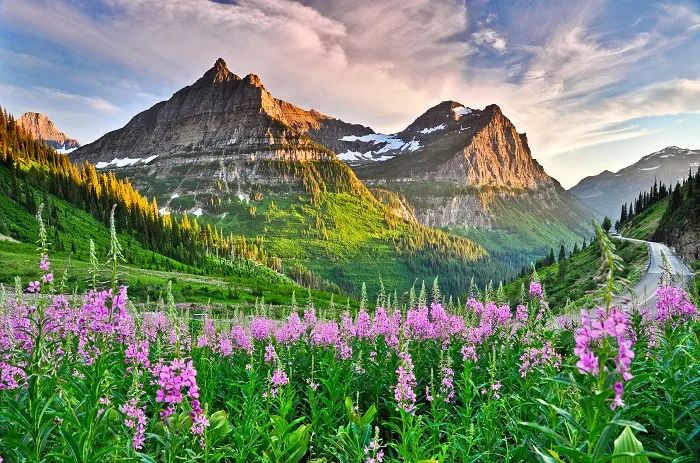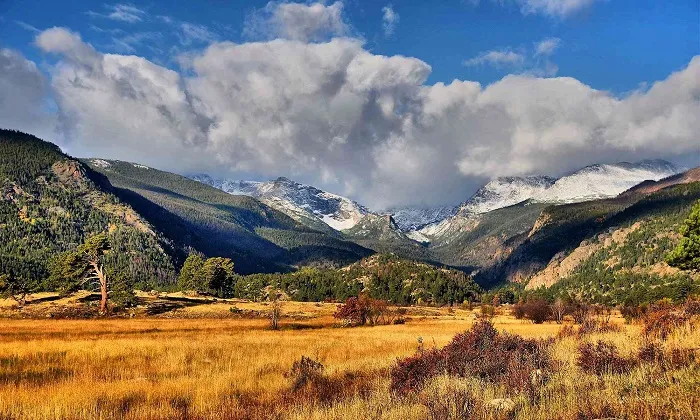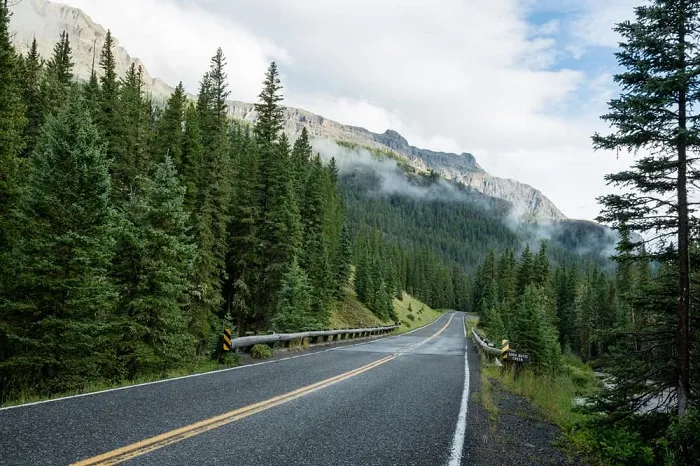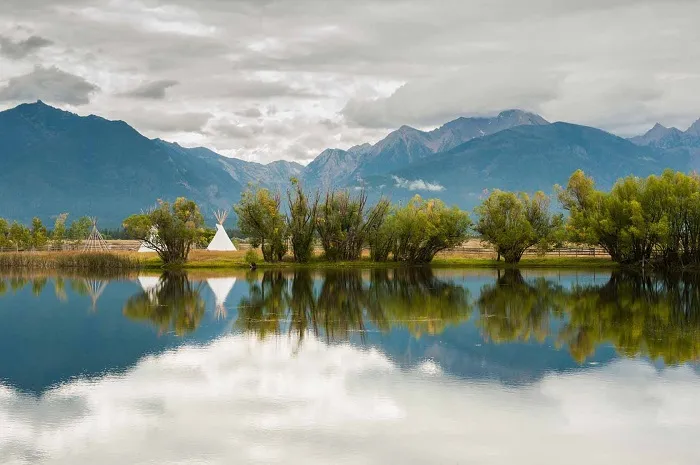Bitterroot National Forest, a hidden gem nestled in the heart of Montana, is an ideal destination for those passionate about ecotourism and immersing themselves in unspoiled nature. Spanning over 1.5 million acres, Bitterroot is more than just a forest; it’s a diverse ecosystem where majestic mountains, crystal-clear rivers, serene lakes, and rich flora and fauna converge. If you’re seeking an authentic nature exploration journey, far from the hustle and bustle of the city, Bitterroot is the perfect stop. This article serves as a detailed ecotourism guide, helping you plan and fully enjoy the beauty of Bitterroot National Forest.
Discover the Untamed Beauty of Bitterroot National Forest
Bitterroot National Forest is located in southwestern Montana, bordering Idaho, and is part of the magnificent Rocky Mountains. Established in 1897, it is one of the oldest national forests in the United States, with a long history of nature conservation. The name “Bitterroot” comes from the Bitterroot plant (Lewisia rediviva), a native plant with vibrant pink flowers that typically blooms in spring and was a vital food source for the indigenous Salish people.
Bitterroot boasts diverse terrain, from peaks towering over 10,000 feet (approximately 3,000 meters) like Trapper Peak and El Capitan, to deep valleys and dense forests. The Bitterroot River flows through the heart of the forest, creating picturesque river landscapes and providing habitat for numerous wildlife species.
The climate in Bitterroot is typical of high mountain regions, with cool summers and cold, snowy winters. Summer (June to September) is the best time to visit Bitterroot, with pleasant weather suitable for outdoor activities such as hiking, camping, and fishing. Autumn (September to October) is also an excellent choice, as the forest trees turn golden and red, creating a romantic and poetic setting.
Diverse Ecotourism Experiences in Bitterroot
Bitterroot National Forest offers countless ecotourism experiences, from gentle relaxation to adventurous challenges. Here are some must-try suggestions:
Hiking and Mountaineering: Conquer Nature
Bitterroot is renowned for its extensive network of hiking and mountaineering trails, catering to all levels and preferences of visitors. From easy trails in river valleys to challenging mountain climbs to summit peaks, Bitterroot always has something to explore.
Some of the most famous and beloved trails include:
- Bear Creek Overlook Trail: An easy trail, approximately 3 miles (4.8 km) long, leading to a stunning overlook of the Bear Creek Valley and the Bitterroot Mountains. This is an ideal option for families and beginner hikers.

- Trapper Peak Trail: A challenging mountain trail, approximately 9 miles (14.5 km) round trip, leading to the summit of Trapper Peak, the highest mountain in Bitterroot National Forest. From the summit, you can enjoy a 360-degree panoramic view of the forest and surrounding areas. This option is for experienced hikers looking for a challenge.

- Blodgett Canyon Trail: A moderate hiking trail, approximately 4.5 miles (7.2 km) round trip, leading into the magnificent Blodgett Canyon. You will witness towering granite cliffs, cascading waterfalls, and pristine natural scenery.

Wildlife Viewing: Meet Forest Inhabitants
Bitterroot is home to many rare wildlife species, including black bears, elk, white-tailed deer, bobcats, foxes, wolves, and various bird species. Visitors can join wildlife viewing tours or explore the forest on their own to seek out these forest inhabitants.
Some ideal locations for wildlife viewing include:
- Lee Metcalf National Wildlife Refuge: A wildlife refuge near Stevensville, Montana, serving as a haven for numerous migratory birds and small mammals.
- Bitterroot River and riverside areas: This is an ideal habitat for many animals, especially waterfowl and semi-aquatic animals.
- High mountain forest areas: If you are lucky, you might spot elk or mountain goats on the high mountain slopes.

Important Note: When wildlife viewing, maintain a safe distance, do not feed them, and do not disturb their habitat.
Eco-Camping: Nights in Nature
Camping is an essential experience for ecotourism in Bitterroot National Forest. The forest has many campsites located in scenic spots, near lakes or in shady forests. You can choose to camp in designated campgrounds or free camp in permitted areas.
Some popular campgrounds in Bitterroot National Forest include:
- Lake Como Campground: A campground located by beautiful Lake Como, providing basic amenities such as restrooms, picnic tables, and parking.
- Rock Creek Horse Camp: A campground for hikers and horseback riders, located near Rock Creek, a famous fishing spot.
- Alta Campground: A small and quiet campground, nestled in a pine forest, suitable for those seeking privacy and tranquility.

Eco-Camping Principles:
- Choose a suitable campsite: Avoid camping near water sources, trails, and environmentally sensitive areas.
- Maintain campsite hygiene: Collect and carry out all waste, do not litter.
- No indiscriminate campfires: Only light fires in designated areas and follow fire safety regulations.
- Respect nature and wildlife: Do not damage plants, do not make noise, and do not disturb animals.
Other Activities: Diverse Experiences
Besides hiking, wildlife viewing, and camping, Bitterroot National Forest offers many other ecotourism activities for you to choose from, such as:
- Fishing: The Bitterroot River and forest lakes are ideal places for fishing for salmon, trout, and other freshwater fish.
- Mountain Biking: Many forest trails are suitable for mountain biking, providing a unique forest exploration experience.
- Kayaking and Water Activities: Lake Como and some calm river sections are suitable for kayaking, canoeing, and swimming.
- Horseback Riding: Some areas in the forest have trails for horseback riding, allowing you to explore the forest in a Western cowboy style.

Ecotourism Tips for Bitterroot National Forest
To have a fulfilling and meaningful ecotourism trip to Bitterroot National Forest, keep the following in mind:
- Best time to visit: Summer (June – September) and Autumn (September – October) are the best times to visit.
- Gear preparation: Bring weather-appropriate clothing, hiking boots, hats, sunglasses, sunscreen, insect repellent, maps, compass, water, and snacks.
- Book in advance: If you want to camp at designated campgrounds, book in advance, especially during peak tourist season.
- Learn about national forest regulations: Comply with regulations on environmental protection, fire safety, and safety when participating in outdoor activities.
- Respect nature and local culture: Maintain environmental hygiene, do not make noise, and respect local customs and traditions.
- Support local tourism: Prioritize using local tourism services such as guides, restaurants, hotels, and souvenir shops.
Conclusion
Bitterroot National Forest is a fantastic ecotourism destination, offering visitors the opportunity to explore unspoiled nature, experience exciting outdoor activities, and learn about diverse ecosystems. With the information and suggestions in this article, we hope you will have a memorable and meaningful trip to Bitterroot, contributing to the conservation and sustainable development of ecotourism in this area. Come and feel the true beauty of Montana, where nature still retains its inherent wild and captivating charm.